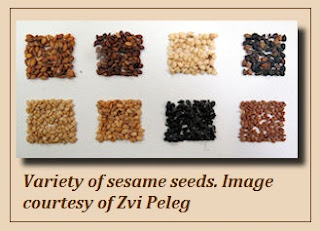Vol. 1, No. 18 | July
21, 2015 | AAI Foresight
News for the Foresight Community:
> Podcast: Futuristic Now
> New Book: The Futurist Leader
> Essay Contest: Life in the Year 2050
> In the News: Patrick Tucker on C-Span
> Foresight Report: IT Revolution, Aerospace, and Society
> Mack Report: Personal Responsibility for the Future
Podcast: Futuristic Now
Techno-philosopher Gray
Scott, editorial director of the Serious
Wonder online futurist journal, has launched a new podcast series titled
Futuristic Now. In the weekly series, he will offer his analysis and
reflections about the implications of such developments as replicants, cyborgs,
and sexbots.
In the first episode, “We Are Technology,” Scott discusses
the digital evolution of humanity. “To understand the future of technology, we
need to begin with one fundamental truth: Technology is natural,” he says. But
“technology has yet to fully reveal itself to us.”
Technology will keep evolving until it becomes conscious, he
says. “It may take 50 years or a thousand years, but it will happen. And when
it does, we will stand face to face with our digital reflection.”
Listen: Futuristic
Now, episode one
Signals: artificial
intelligence, cyborgs, evolution, technology, transhumanism
New Book: The Futurist Leader
 The Association for Talent
Development has published Kedge principal and managing director Yvette Montero Salvatico’s new book, The Futurist Leader (June 2015, $24.95
paperback or PDF), as part of its “TD
at Work” series.
The Association for Talent
Development has published Kedge principal and managing director Yvette Montero Salvatico’s new book, The Futurist Leader (June 2015, $24.95
paperback or PDF), as part of its “TD
at Work” series.
To master the challenges of an ever-shifting business
landscape, leaders must embrace strategic foresight, which will enable them to
recognize emerging patterns before they become threats—or opportunities. The workbook
provides guidance and a framework that will help organizations and their
leaders put strategic foresight into practice.
Details: ATD
Publications
Signals: business,
leadership, strategic foresight
Essay Contest: Life in the Year 2050
What will daily life be like 35 years from now? What will
you wear, where will you live, where will you go on vacation, and how will you
get there?
The 2050 Club is
seeking creative, forward-looking essays (deadline
July 31), offering a grand prize of $250 and “Cool Kids” prizes of $100 for
entrants under age 16 (submitted by their parents).
Details, Vote on
submissions: 2050
Club on Facebook
Signals:
creativity, futurism, youth, visions
In the News: Patrick Tucker on C-Span
The nearly simultaneous cyber failures at United Airlines
and the New York Stock Exchange earlier this month, along with news of a major
hack at the U.S. Office of Personnel Management, brought Defense One’s
technology editor Patrick Tucker to
the studios of C-Span’s Washington
Journal on July 12.
While the UA and NYSE failures were unintentional technological
glitches and quickly resolved, the OPM hack is gravely concerning, affecting as
many as 21.5 million people. The hackers targeted the information provided by
individuals who had gone through or applied for security clearance, which means
that any information that was given about, for instance, personal contacts in other
countries, is now in the hands of hackers. This makes U.S. intelligence assets
(i.e., agents) vulnerable, Tucker pointed out.
All three of these failures were predictable, Tucker said.
The problems result from the massive demands modern society now makes on
technologies, such as imposing complex new software on top of legacy systems
that cannot accommodate it.
While the OPM hack “was preventable,” Tucker said, “that’s
the thing that hindsight gives us—the knowledge that something was
preventable.” We should have been expecting such a sophisticated malware
attack, and we should have been protecting ourselves from it. “You have to
assume that data that has been collected is going to get out.”
View: Patrick
Tucker on U.S. cyber threats, Washington Journal (July 12, 2015)
Signals: complexity, cybercrime, government, security, software,
technology
__________
Calling All Conference Goers!
Are you attending Worldfuture 2015 this week in San
Francisco? Please send us your reports and photos from the event!
We also want to hear about any other conferences,
exhibitions, or experiences that you’d like to share with the wider foresight
community.
Contact: Cynthia
G. Wagner, consulting editor, at CynthiaGWagner@gmail.com, or Tim Mack,
managing principal, at tcmack333@gmail.com
__________
Foresight Report: IT Revolution, Aerospace, and Society
AAI Foresight is pleased to announce the publication of “Emerging
Impacts of the IT Revolution upon Technology, Aerospace, and Society: Creating
Problems and Enabling Solutions” by Dennis
M. Bushnell, chief scientist at NASA Langley Research Center.
In the report, the third in AAI Foresight’s series of Foresight
Reports, Bushnell reflects on the multiplying effects of converging technological
revolutions, which the information technology revolution in particular has enabled.
As a result, the world is avowedly technologically “flat.”
These technologies offer the promise of accelerating our
exploration and development off planet, including Mars. And while they force
society to confront the challenges of technological unemployment, developments
such as “tele-everything” and 3-D printing manufacturing will also enhance
individual independence, he says.
Download: “IT
Revolution, Aerospace, and Society” by Dennis M. Bushnell, Foresight Report
(Summer 2015), PDF.
Signals: communications,
computing, information technology, Mars, space, 3-D printing
Report from Tim Mack: Personal Responsibility for the Future
In his latest blog for AAI Foresight, managing principal Tim Mack reflects on the changing
nature of the questions he’s being asked about the future. In describing
audience reaction to a speech he prepared shortly before retiring as president
of the World Future Society, he writes:
“Although a few questions did relate to the content of my
presentation, the majority of audience inquiries keyed off of the speaker
introduction, which mentioned that I was retiring in a few months to an island
in Puget Sound, north of Seattle. The myriad of questions all had an “end
times” feel to them, including how I was preparing for catastrophic weather,
resource shortfalls, civil unrest, and so on.”
Wondering whether such questions stem from disillusionment
with public problem solving—and acceptance of more personal responsibility for
larger issues—Mack invites readers to join him in a dialogue about whether “concern
about the future [is] growing while confidence in our ability to affect its course
declines.”
Read “TakingPersonal Responsibility for Larger Issues” by Tim Mack, Foresight Signals Blog,
posted July 20, 2015.
Signals: catastrophe
planning, dialogue, public policy, responsibility, values
__________
Send us your signals!
News about your work and other tips are welcome, as is feedback on Foresight Signals. Contact Cynthia G. Wagner, consulting
editor.
Want more signals from AAI Foresight? Check out the blog! Log in to add comments.
Feel free to share Foresight Signals with your networks and
to submit any stories, tips, or “signals” of trends emerging on the horizon
that we can share with other stakeholders and the foresight community.
__________
© 2015 AAI Foresight
Foresight Signals is a publication of AAI
Foresight
1619 Main Street,
#1172
Freeland, WA 98249
Managing Principal:
Timothy C. Mack
tcmack333@gmail.com | 202-431-1652
Webmaster and IT
Consultant: Tom Warner
Consulting Editor:
Cynthia G. Wagner











